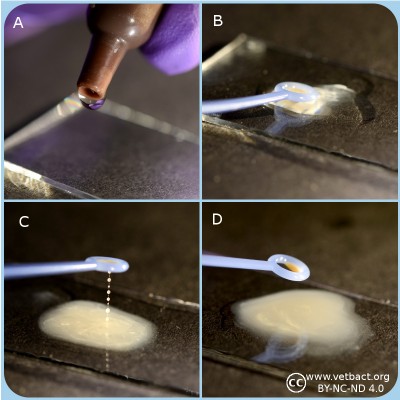Potassium hydroxide testPotassium hydroxide test. A. Application of potassium hydroxide solution onto a microscopic slide. GeneralThe purpose of the potassium hydroxide test (KOH test) is to identify gram negative bacteria. KOH dissolves the thin layer of peptidoglycan of the cell walls of gram negative bacteria, but does not affect gram positive cell walls. Disintergration of gram negative cell walls lyses the cell and release its contents, including the DNA. The DNA will make the solution very viscous and the solution will stick to the plastic loop when touched. Gram positive bacteria will not be affected by KOH, because they have thicker peptidoglycan layer in the cell wall. Thus, the cells will not be lysed, the DNA not released and no viscosity will be observed. Material
Method
Positive results: The solution with the bacteria (gram negative) will be viscous Negative results: The solution with the bacteria (gram positive) will not be viscous UseThe purpose of the KOH test is to quickly distinguish between gram negative and gram positive bacteria as a complement to Gram staining. The test is not useful for anaerobic bacteria.
Updated: 2017-12-20. |

